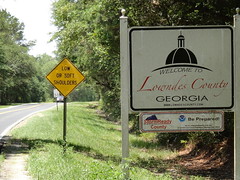 Richard Florida wrote in the Atlantic in December 2009,
How the Crash Will Reshape America:
Richard Florida wrote in the Atlantic in December 2009,
How the Crash Will Reshape America:
Big, talent-attracting places benefit from accelerated rates of “urban metabolism,”The question we need to address is how to be a small talent-attracting place, and even more a smallish place that grows its own talent and jobs.
This part is especially relevant:
But when the Santa Fe team examined trends in innovation, patent activity, wages, and GDP, they found that successful cities, unlike biological organisms, actually get faster as they grow. In order to grow bigger and overcome diseconomies of scale like congestion and rising housing and business costs, cities must become more efficient, innovative, and productive. The researchers dubbed the extraordinarily rapid metabolic rate that successful cities are able to achieve “super-linear” scaling. “By almost any measure,” they wrote, “the larger a city’s population, the greater the innovation and wealth creation per person.”I don’t know about you, but I don’t want our area to grow up to be Atlanta. Georgia already has one of those, and one is more than enough. Ditto Orlando, Jacksonville, and Tallahassee.
How instead do we manage to produce a local economy that grows dollar-wise in a sustainable (hi Barbara!) fashion without massive population growth? Sure, that’s a hard problem, but right now we aren’t seeing any growth in either population or the economy, so we might as well consider this an opportunity.
One relevant part of Richard Florida’s article is density. Manhattan is a business, arts, and finance center because so many things are so close together you can walk to many of them. Silicon Valley is a high tech center because of Stanford, HP, venture firms, etc., all clumped together, and San Francisco and Berkeley up the 280 for arts.
Now, VSU isn’t Stanford and never will be, but it is a regional campus of the state university system and has so many students that it is in the top 10% by size of all colleges nationwide. Surely there are some aspects of VSU that are either relevant now to knowledge-based jobs or can be developed to be so.
And while Valdosta isn’t San Franciso, nor even Charlotte, as certain local cynics are fond of reminding me, it does have many positive features including local arts, theater, music, parks and shopping. We can build on the existing strengths.
Hahira, Dasher, Lake Park, Remerton, our smaller cities, each have specialized attractions. They don’t need to be competing with Valdosta, nor with each other, but rather complimenting one another.
How about find a way to build on forestry that doesn’t depend on burning trees? Or develop the local sports scene beyond TitleTown? Or build on the arts? Or….
Or we could get an Olive Garden. Yes, that’s it! Oh, right, we are, at exit 18. Well, maybe that will take care of everything.
Or maybe you have some other ideas.
-jsq
PS: Owed to Tim Carroll.
Short Link:

Good review John and good questions/points.
I presented this article to the Opportunity Central Book Club this week. Along with a presentation on the “Community Agenda” portion of the Greater Lowndes Comprehensive Plan with Matt Martin – Planning and Zoning Admin. for the City of Valdosta. Great club that started earlier this year out of a Chamber initiative. As you may can tell, this is not a tea and cookies book club.
Richard Florida had a follow on article in the same publication not long ago. Check it out.